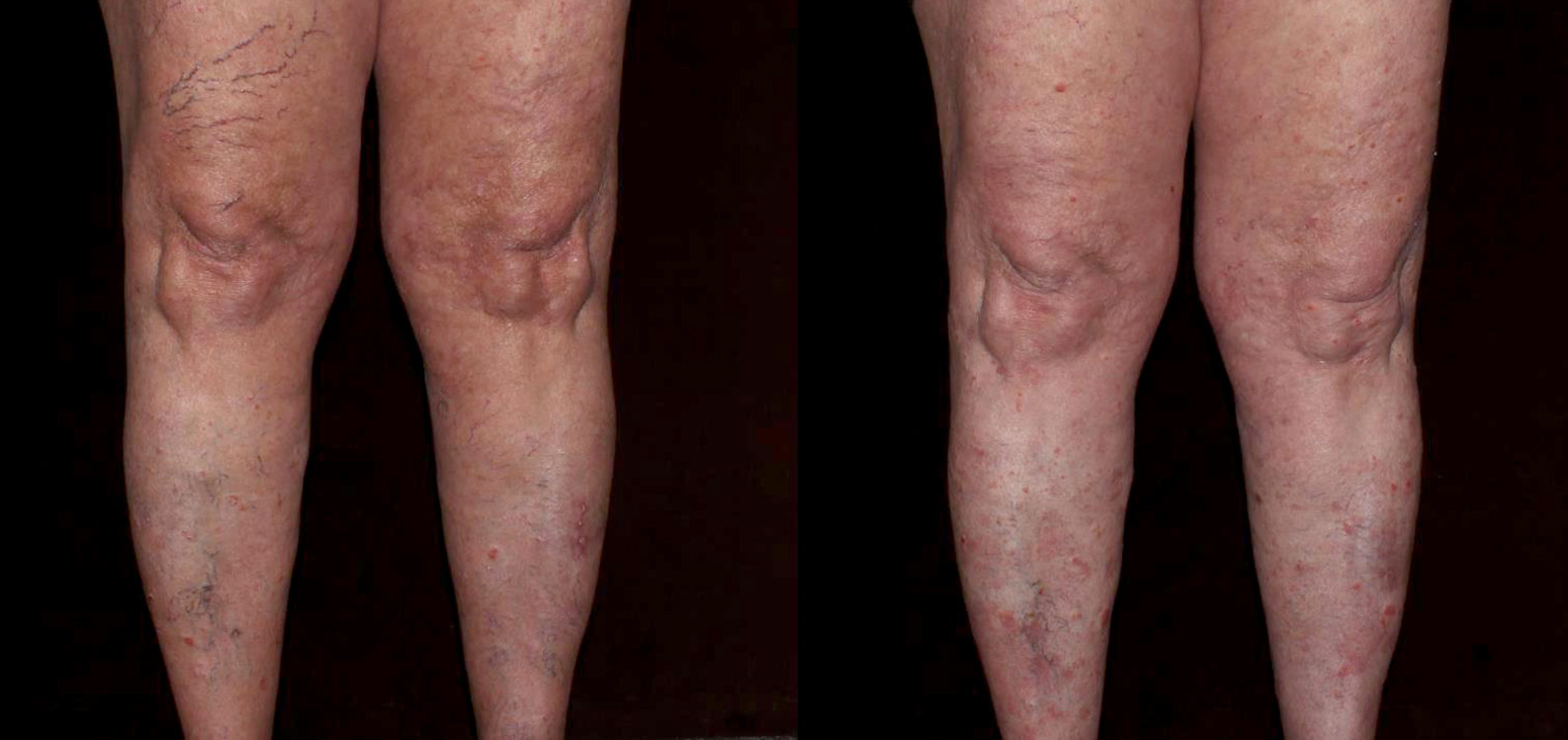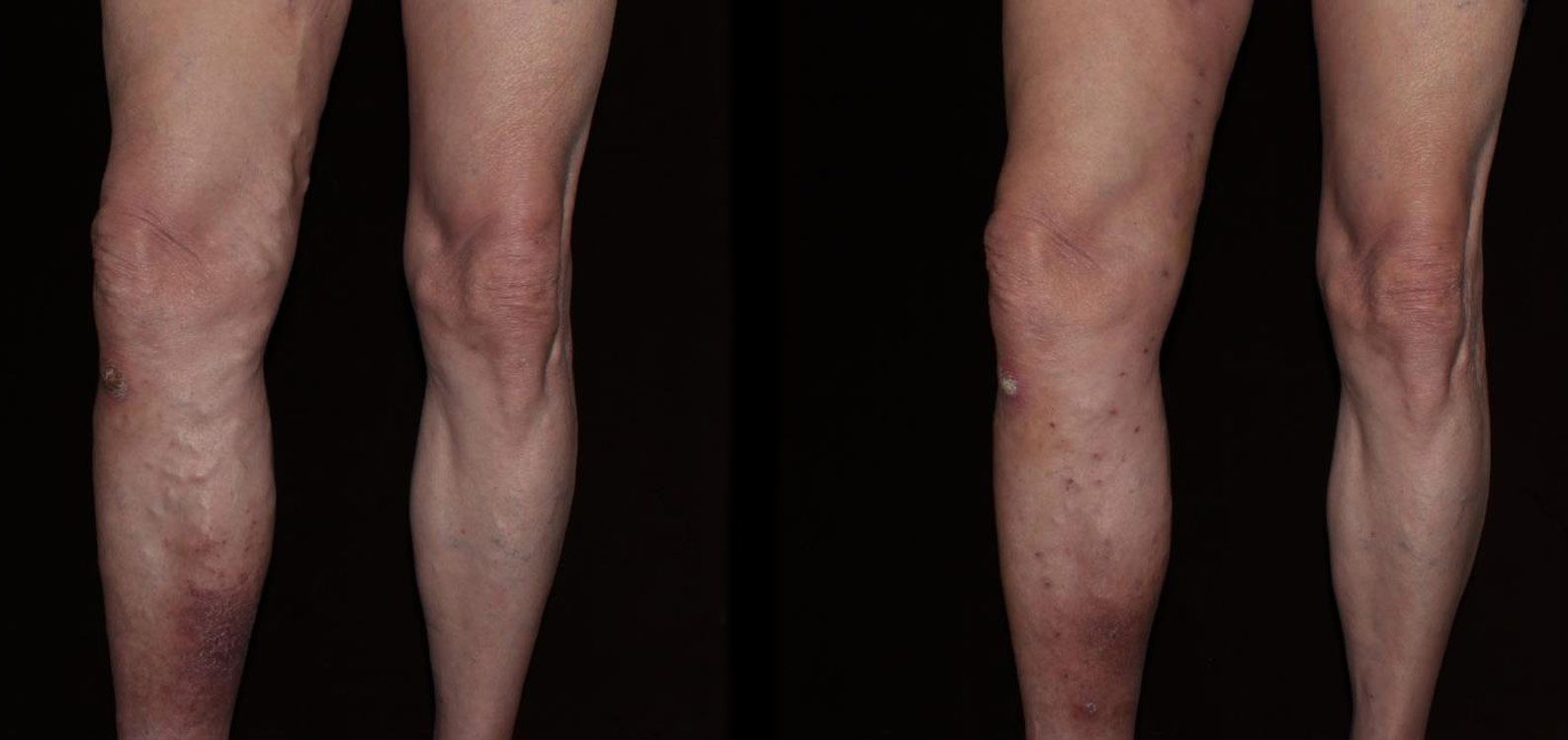Spider Veins
A laser is used on the surface of the skin with a cooling device to deliver energy to the spider veins. Laser treatment is often used in conjunction with sclerotherapy injections. With the two treatments working together, they clear up small visible “surface veins” as well as the underlying reticular or “feeding” vein, which is often the cause of the visible spider veins, and must be taken care of to achieve successful, beautiful long lasting results.
Varicose Veins
Varicose Vein Surgery or Microphlebectomy is a procedure performed to address bulging, twisting varicose veins that cannot be treated with endovenous laser treatments. It is often combined with endovenous laser treatment and sclerotherapy of spider veins. After marking the bulging veins, a local anesthetic is used and a small micro-incision is made, allowing a small hook like instrument to be inserted just below the surface of the skin and remove the diseased vein segment by segment, as it extends down the leg. Typically no sutures are required and the incisions heal within 1-2 weeks during which time compression stockings are worn. When treated, these ropy veins are permanently gone. However, if you have a family history you could form new ropy veins.
Venous Ulcer Wound Care
Facial Veins
Prominent superficial forehead veins, sub-orbital veins and temporal veins, while not life threatening, do require cosmetic intervention when the person needing treatment does not have an underlying medical condition. These veins can be treated with the Cutera 1064nm Nd:Yag Laser (J Cosmetic Dermatol, 2007 Mar;6(1):6-8), or with micro-phlebectomy and sclerotherapy.
of women suffer from some
type of vein problem
of men suffer from some
type of vein problem
of varicose vein patients
have a family history
High Ligation
The tissue is dissected down to the Great Saphenous Vein where it meets the common femoral vein. The Great Saphenous Vein is then tied off with suture. The idea is to sever the connection between the Superficial veins (Great Saphenous Vein) and the deep veins (Common Femoral Vein). If the superficial vein in the leg isvery large in diameter it may not respond fully to endovenous ablation. High ligation ensures complete treatment of the superficial vein in the leg.






